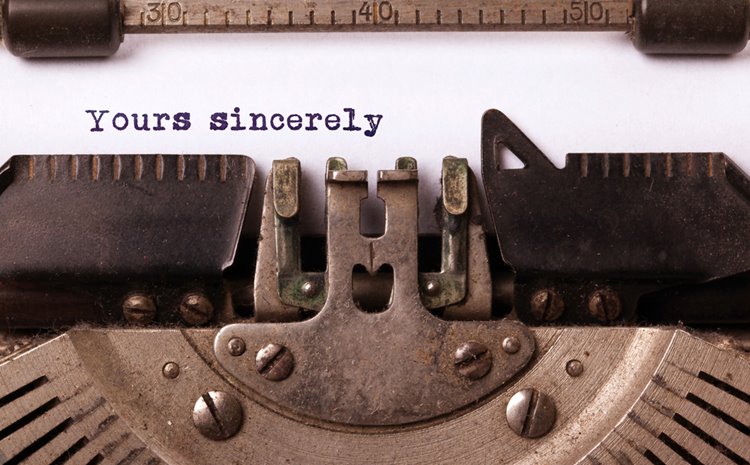How to write a cover letter | Cover letter sample

A cover letter could be likened to an ‘introduction’ to your resume. Your cover letter is where you might demonstrate who you really are to your future employer, and it gives you the opportunity to show some personality. Remember, it's an important way to show that you meet the company’s needs, and the scope of the job role that’s advertised.
How important are cover letters? Well, the jury’s still out on that one, with many employers saying they are essential, and many others suggesting that they’re “on the way out”. The fact of the matter is, cover letters are still widely requested, so jobseekers need to know how to write them. Many HRs and employers suggest that a well-written introduction is extremely valuable, so make sure you are especially happy with the first part of your cover letter.
How to write a resume: previously in Skillstalk we gave you sure-fire tips to submitting a resume that employers will love, as well as a downloadable resume template. Now, let’s work on how to write a cover letter.
Download your sample cover letter template here.

How important is a cover letter?
According to Lauren Nelson, a Communications Specialist at Aesthetic Cogency, a US-based Marketing Firm:
“If you can’t follow simple instructions in the application process, I have little to no faith in your ability to take direction on the job.”
“Every job posting I’ve ever written has made it clear that I require a cover letter. I even go so far as to tell them what I’m looking for in that cover letter: an explanation of why their experience and skills makes them a good fit for the opening. There is no opportunity for confusion.”
Because cover letters are often sent in the form of an email these days, they generally aren’t expected to be as formal as they once were, but there are still a few essentials to include. Here’s how to write the perfect cover letter.

Cover letter example: step-by-step
Let's look at how to put together your cover letter, step-by-step.
Greeting
The first essential tip from the experts is to not start out with a generic "Dear sir/madam" or "To whom it may concern," as this is impersonal and defeats the purpose of your cover letter.
If it's not immediately clear who to address your letter to, try to build this into your research and attempt to uncover who the hiring manager is in this case. This shows your dedication and research skills.
Introduction
This section is where you should introduce yourself, as well as mentioning the position you are applying for. This is where you should explain how you found out about the organisation and talk about why you are applying for the job role.
One tip is to never assume that the recipient will know what position you are applying for, as there may be several roles being scoped for at the same time. Make things easy for the hiring manager and give them all the information at their fingertips.
This section is where you can list any knowledge you have of the company, or to mention any connections you might have with people who currently work there… do you have any connections via LinkedIn, or a similar network?
You should also check the web for press releases, news, articles or anything else that might give you a better idea of the company and its culture, as this could help you to adopt the right tone in your cover letter. Are they formal-sounding, casual or highly creative? Adopt this tone in your cover letter.
Reasoning & evidence
What are the specific reasons you should be considered for the job? This is the section where you address the selection criteria and use real examples of your previous work as evidence to show your relevance for the role. This might be things like relevant experience, education or personal accomplishments that make you an ideal candidate.
One thing to note in this section is that you should not merely recap your resume here; instead, try to show some personality, creativity and enthusiasm, and showcase your achievements and past accomplishments.
Closing paragraph
In your final paragraph, list any information that was specifically requested in the job description, such as knowledge of particular programs and platforms, availability dates, and qualifications. Then thank the employer for his/her time.
It’s a great idea to aim to show an interest in what the company does. Take the time to research the organisations you will be applying to. Aside from company websites, you can spend some time researching the culture of a place on social media. For example, check out some of the executives' Twitter feeds or other employee profiles on LinkedIn. What can you find out?
Sign-off
Aim to be positive and up-beat here, and try to strike a balance between being too casual or too formal. You might say something like “I look forward to hearing from you”.
As before, you should always refer to recent press releases, news articles (or anything else) that might give you a better picture of the company and its culture, as this will help you to adopt the right tone in your cover letter.

Quick cover letter tips
- Keep your cover letter to one page. Employers don’t have time to read a lengthy cover letter.
- Get the hiring manager’s attention by using a question or a leading statement in your intro.
- Make sure you include evidence that you have done enough research on the organisation.
- Tie your own skills to the job description.
- Do not give out too much personal information.
- Never simply rehash the information on your resume.
- Never use the same letter for all jobs. Cater each letter to the particular position/organisation.
- Talk about your abilities in terms of how your experiences will benefit the organisation.
A final word on how to write a cover letter
As Skillstalk mentioned in how to write a resume, clean lines and plenty of white space (hello there margins!) will help the eye travel more easily for better readability. This includes keeping fonts to the basics like Arial, Calibri, Garamond or Helvetica.
Ready to go?
Download your sample cover letter template here.


)
)

